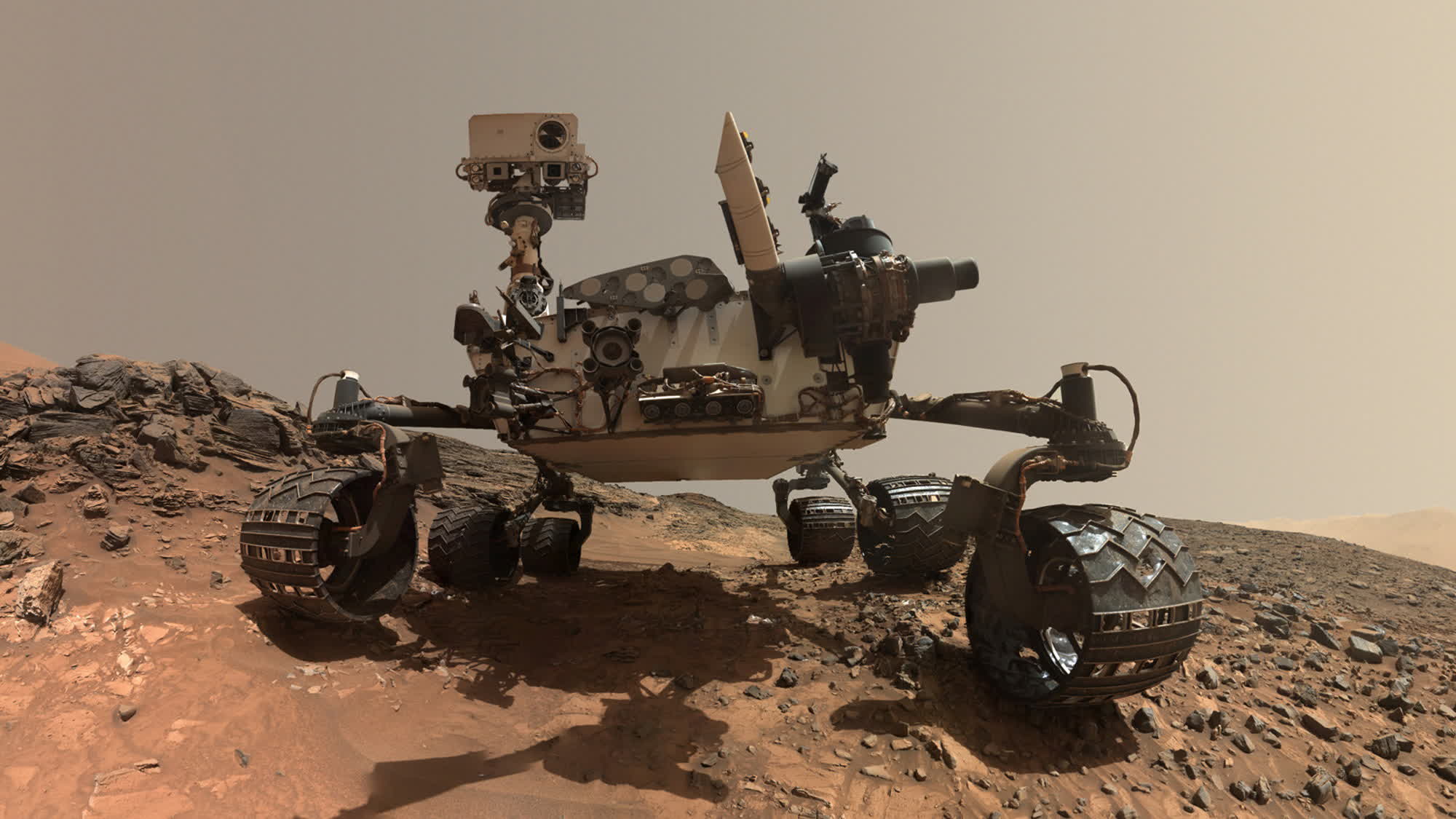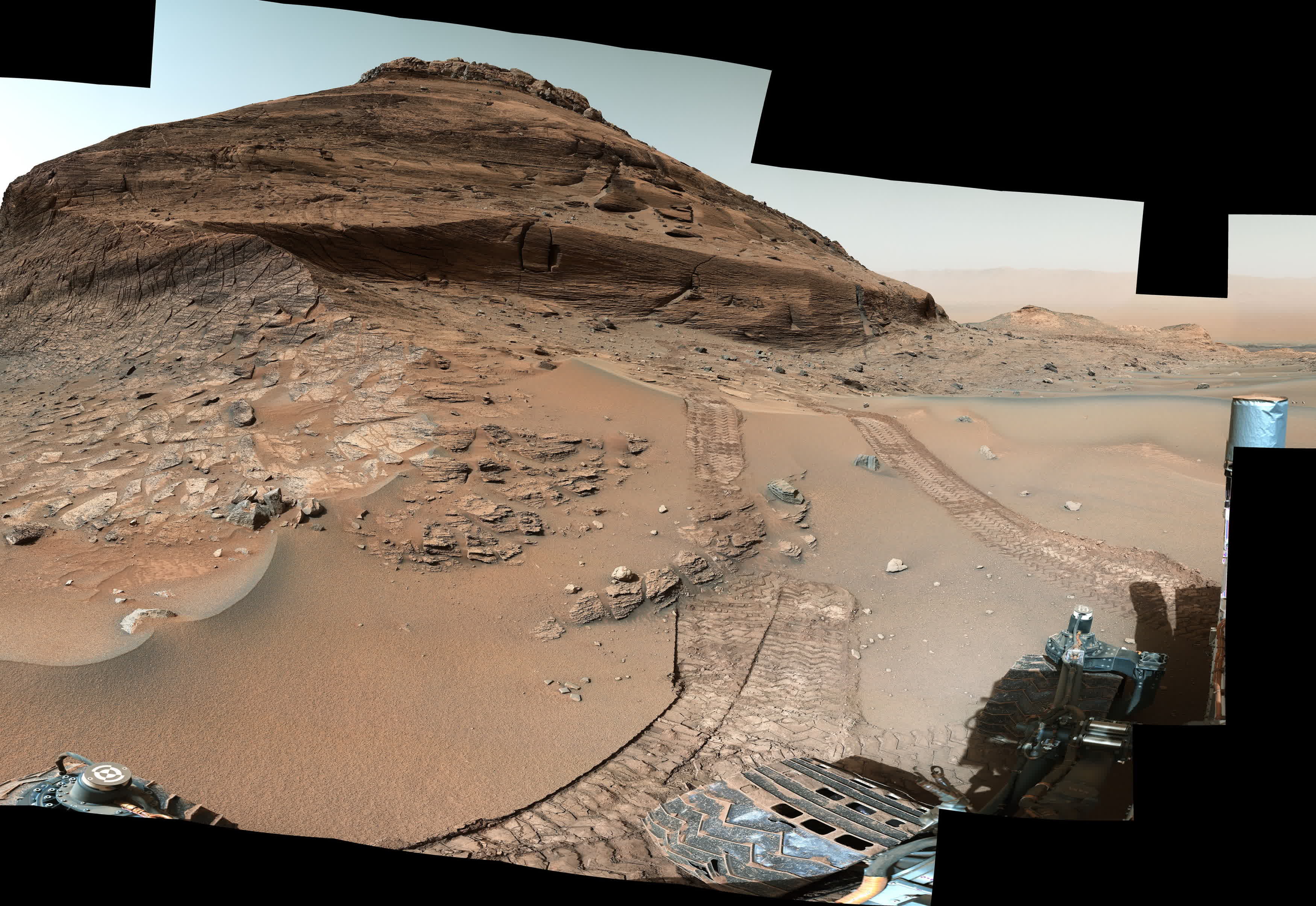In context: Launched from Cape Canaveral on November 26, 2011, the Curiosity rover was designed for scientific investigations during a two-year mission. Twelve years later, the car-sized machine is still roaming Mars' surface while NASA improves the software side of things from afar.

Between April 3 and 7, Curiosity's science and imaging operations were put "on hold" for planned software maintenance. NASA installed the latest "patch" to its Mars rover's flight software, a major update which was planned for years and designed to further extend the rover's capabilities and longevity in the Red Planet's harsh environment.
NASA started to work on the now-up and running software update back in 2016, when Curiosity got its last software overhaul. The new flight software (R13) brings about 180 changes to the rover's system, two of which will make the Mars robot drive faster and reduce wear and tear on its wheels.
The first major change implemented by NASA in Curiosity software is related to how the machine processes images of its surroundings to plan a route around obstacles. Newer rovers like Perseverance are equipped with onboard computers capable of processing images on-the-fly, while the robots are still in motion. Curiosity, on the other hand, doesn't have that kind of feature and it needs to stop every time to reassess surface conditions and correct its course.

NASA is clearly unable to install new hardware equipment on Curiosity, but the latest software update makes image processing faster so that the rover needs to stop "for just a moment or two" instead of the full minute needed before. This way, Curiosity will consume less energy and extend its mission even further.
The second major improvement brought by the R13 update is for the rover's aluminum wheels, which started to show signs of wear within the mission's first year. The patches installed before provided the rover with an algorithm to improve traction, now R13 "goes further" in that direction by introducing "two new mobility commands" that can reduce the amount of steering Curiosity needs to do "while driving in an arc toward a specific waypoint," NASA said. The driving process will be simpler, thus wear should be further reduced.
Jonathan Denison, Team Chief of Curiosity engineering operations, said the idea of hitting the install button "was a little scary" despite all the testing made during the past years. "We never know exactly what will happen until the software is up there," Denison said, and you clearly cannot send a technician for remote support on Mars (yet).
According to data provided by NASA to The Register, the R13 interplanetary software patch was a 21.921-megabyte image – just a bit larger than R12 (21.304MB). The update was split into 51 different files, which were sent to Curiosity's computer from November to December 2022. The installation required multiple steps, giving the system the ability to roll things back each time in case of errors. R13 is now installed and working as intended, NASA confirmed, but R12 is still onboard "in a special backup" memory so that Curiosity can switch to the old flight control software if needed.